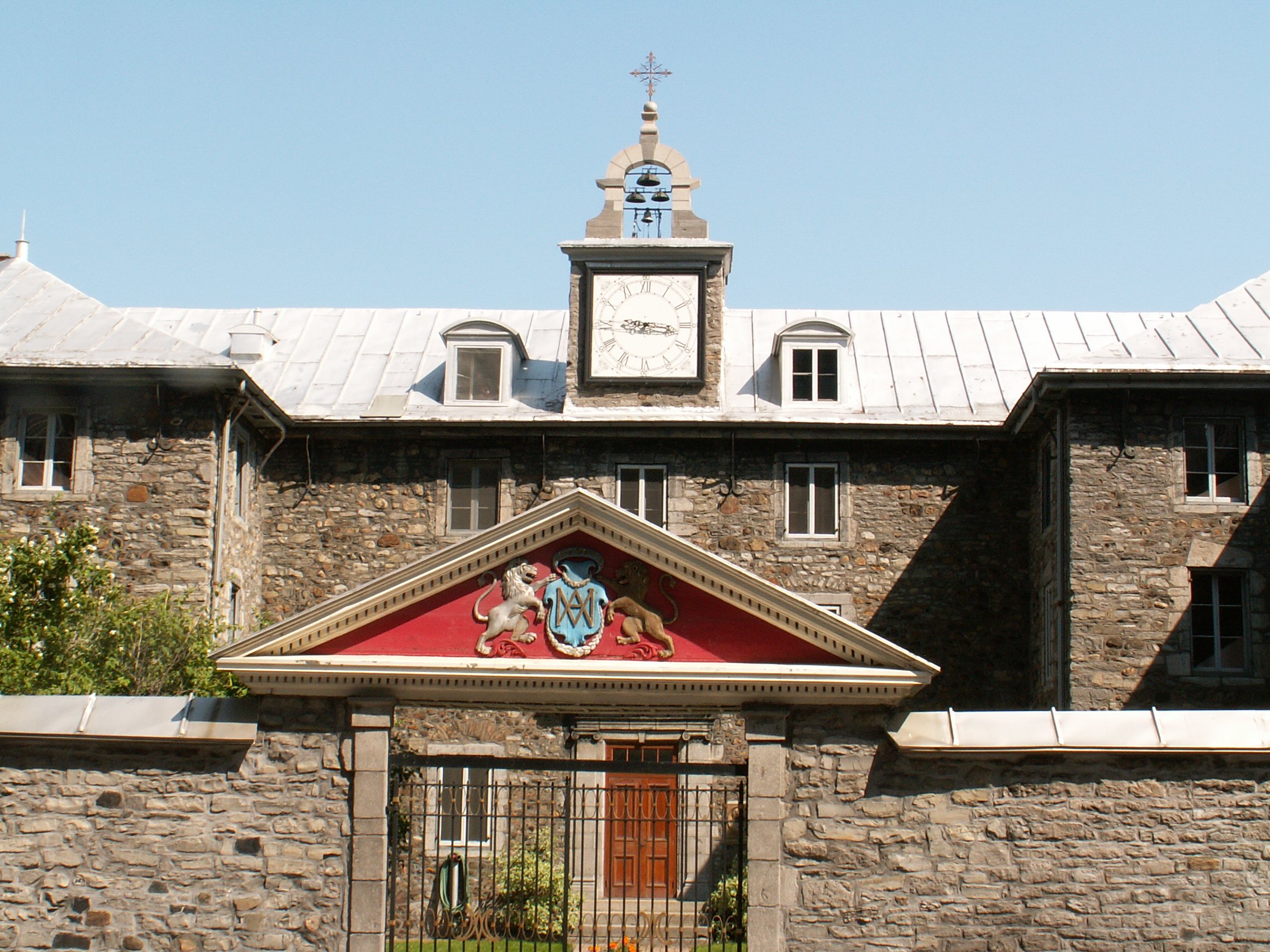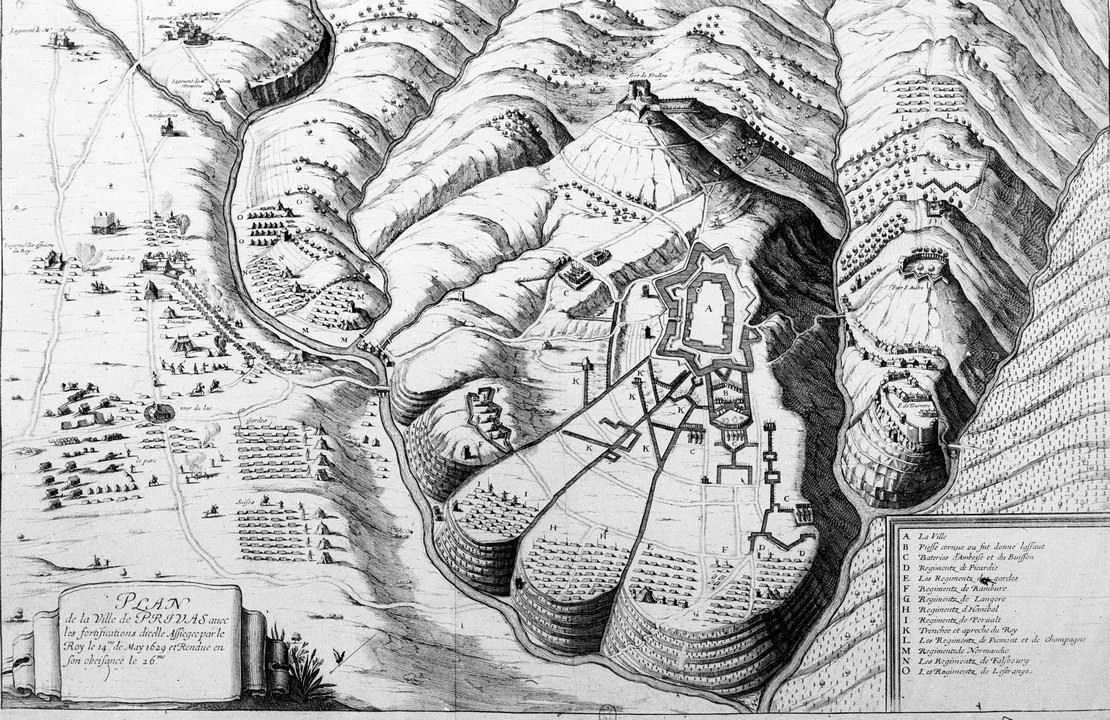|
Gabriel Thubières De Levy De Queylus
Gabriel Thubières de Levy de Queylus, S.S. (1612 – 20 May 1677), was a Sulpician priest from France, who was a leader in the development of New France. He was the founder and first superior of the Seminary of Saint-Sulpice in Montreal. Life Early life De Queylus, as he was known during his life, was born in 1612 in Privezac, in the ancient Province of Rouergue in the Kingdom of France, a son of a wealthy nobleman. Destined for service in the Church, at the age of 11 he was made the commendatory abbot of the Abbey of Loc-Dieu, giving him the lifelong title of abbé. Choosing late in his life to pursue the priesthood, he studied at a seminary in the village of Vaugirard, now the Quartier Saint-Lambert in the 15th arrondissement of Paris. He was ordained a priest on 15 April 1645. In July of that year, he joined the Society of Saint-Sulpice, dedicated to the sound training of a clergy for France and her territories. That same year, independently, he joined the Société Notre ... [...More Info...] [...Related Items...] OR: [Wikipedia] [Google] [Baidu] |
Sulpician
The Society of Priests of Saint-Sulpice (french: Compagnie des Prêtres de Saint-Sulpice), abbreviated PSS also known as the Sulpicians is a society of apostolic life of Pontifical Right for men, named after the Church of Saint-Sulpice, Paris, where it was founded. The members of the Society add the nominal letters PSS after their names to indicate membership in the Congregation. Typically, priests become members of the Society of the Priests of St. Sulpice only after ordination and some years of pastoral work. The purpose of the society is mainly the education of priests and to some extent parish work. As their main role is the education of those preparing to become priests, Sulpicians place great emphasis on the academic and spiritual formation of their own members, who commit themselves to undergoing lifelong development in these areas. The Society is divided into three provinces, operating in various countries: the Province of France, Canada, and the United States. In Franc ... [...More Info...] [...Related Items...] OR: [Wikipedia] [Google] [Baidu] |
Royal Court
A royal court, often called simply a court when the royal context is clear, is an extended royal household in a monarchy, including all those who regularly attend on a monarch, or another central figure. Hence, the word "court" may also be applied to the coterie of a senior member of the nobility. Royal courts may have their seat in a designated place, several specific places, or be a mobile, itinerant court. In the largest courts, the royal households, many thousands of individuals comprised the court. These courtiers included the monarch or noble's camarilla and retinue, household, nobility, clergy, those with court appointments, bodyguards, and may also include emissaries from other kingdoms or visitors to the court. Foreign princes and foreign nobility in exile may also seek refuge at a court. Near Eastern and Far Eastern courts often included the harem and concubines as well as eunuchs who fulfilled a variety of functions. At times, the harem was walled off and separate ... [...More Info...] [...Related Items...] OR: [Wikipedia] [Google] [Baidu] |
François De Laval
Francis-Xavier de Montmorency-Laval, commonly referred to as François de Laval (30 April 1623 – 6 May 1708), was a French prelate of the Catholic Church. Consecrated a bishop in 1658, he led the Apostolic Vicariate of New France from 1658 to 1674 and then became the first bishop of the Diocese of Quebec from its erection in 1674 until he retired because of poor health in 1688. He continued to work in New France until his death in 1708. Among his accomplishments was the founding of the Séminaire de Québec in 1663. Laval was a member of the Montmorency family, but renounced his rights as heir so he could pursue his ecclesiastical career. He was beatified by Pope John Paul II on 22 June 1980 and Pope Francis declared him a saint on 3 April 2014. Early life Laval was born on 30 April 1623 in Montigny-Sur-Avre in the ancient Province of Perche, now the Department of Eure-et-Loir. His father Hugues de Laval, a member of the House of Laval, was the Seigneur of Montigny, Montba ... [...More Info...] [...Related Items...] OR: [Wikipedia] [Google] [Baidu] |
Jesuits
The Society of Jesus ( la, Societas Iesu; abbreviation: SJ), also known as the Jesuits (; la, Iesuitæ), is a religious order (Catholic), religious order of clerics regular of pontifical right for men in the Catholic Church headquartered in Rome. It was founded in 1540 by Ignatius of Loyola and six companions, with the approval of Pope Paul III. The society is engaged in evangelization and apostolic ministry in 112 nations. Jesuits work in education, research, and cultural pursuits. Jesuits also give retreats, minister in hospitals and parishes, sponsor direct social and humanitarian ministries, and promote Ecumenism, ecumenical dialogue. The Society of Jesus is consecrated under the patron saint, patronage of Madonna della Strada, a title of the Blessed Virgin Mary, and it is led by a Superior General of the Society of Jesus, Superior General. The headquarters of the society, its Curia, General Curia, is in Rome. The historic curia of Ignatius is now part of the attached to t ... [...More Info...] [...Related Items...] OR: [Wikipedia] [Google] [Baidu] |
Clermont, Landes
Clermont (; oc, Clarmont) is a commune in the Landes department in Nouvelle-Aquitaine in southwestern France. Population See also *Communes of the Landes department The following is a list of the 327 communes of the Landes department of France. The communes cooperate in the following intercommunalities (as of 2020):Communes of Landes (department) {{Landes-geo-stub ... [...More Info...] [...Related Items...] OR: [Wikipedia] [Google] [Baidu] |
Huguenots
The Huguenots ( , also , ) were a Religious denomination, religious group of French people, French Protestants who held to the Reformed, or Calvinist, tradition of Protestantism. The term, which may be derived from the name of a Swiss political leader, the Genevan burgomaster Bezanson Hugues (1491–1532?), was in common use by the mid-16th century. ''Huguenot'' was frequently used in reference to those of the Reformed Church of France from the time of the Protestant Reformation. By contrast, the Protestant populations of eastern France, in Alsace, Moselle (department), Moselle, and Montbéliard, were mainly Lutheranism, Lutherans. In his ''Encyclopedia of Protestantism'', Hans Hillerbrand wrote that on the eve of the St. Bartholomew's Day massacre in 1572, the Huguenot community made up as much as 10% of the French population. By 1600, it had declined to 7–8%, and was reduced further late in the century after the return of persecution under Louis XIV, who instituted the ''dr ... [...More Info...] [...Related Items...] OR: [Wikipedia] [Google] [Baidu] |
Siege Of Privas
The siege of Privas was undertaken by Louis XIII of France from 14 May 1629, and the city of Privas was captured on 28 May 1629. It was one of the last events of the Huguenot rebellions (1621-1629). Context The siege of Privas followed the disastrous capitulation of the main Protestant stronghold of La Rochelle. Louis XIII then moved to eliminate the remaining Huguenot resistance in the south of France. With Alès and Anduze, the city of Privas was at the center of a string of Protestant strongholds in the Languedoc, stretching from Nîmes and Uzès in the east, to Castres and Montauban in the west. Privas was selected by Antoine Hercule de Budos, Marquis des Portes (1589-1629), as a strategic target; capturing it would break a line of Huguenot defences and disconnect their main centers of Nîmes and Montauban. The city was defended by Alexandre du Puy-Montbrun, a leading Protestant from Montbrun-les-Bains in the Dauphiné, already active in Montauban (1621). The siege Privas ... [...More Info...] [...Related Items...] OR: [Wikipedia] [Google] [Baidu] |
Privas
Privas (; oc, Privàs , also ) is a city located in France, in the department of Ardèche. With its 8,465 inhabitants (2019), it is the least populated prefecture (capital of a department). It was the location of the 1629 Siege of Privas. Today, Privas is known for the purée made from the local chestnuts, and for its sweetened marron glacé. History The earliest traces of the commune are attested in the hamlet of Lac where recent archaeological excavations have revealed a Roman villa dating to the beginning of the Empire, as well as a medieval burying-ground. Moulds for counterfeiting coinage found in the 19th century on the slopes of Mont-Toulon had not been interpretable as signifying a local centre of population. Privas possibly comes from the old Gallic word ''briva'' meaning thoroughfare, or more specifically a wooden causeway over a ravine or water. This may refer to a river crossing now spanned by the ''Pont Louis XIII'', just to the south of the town centre. ... [...More Info...] [...Related Items...] OR: [Wikipedia] [Google] [Baidu] |
Pastor
A pastor (abbreviated as "Pr" or "Ptr" , or "Ps" ) is the leader of a Christian congregation who also gives advice and counsel to people from the community or congregation. In Lutheranism, Catholicism, Eastern Orthodoxy, Oriental Orthodoxy and Anglicanism, pastors are always ordained. In Methodism, pastors may be either licensed or ordained. Pastors are to act like shepherds by caring for the flock, and this care includes teaching. The New Testament typically uses the words "bishops" ( Acts 20:28) and "presbyter" ( 1 Peter 5:1) to indicate the ordained leadership in early Christianity. Likewise, Peter instructs these particular servants to "act like shepherds" as they "oversee" the flock of God ( 1 Peter 5:2). The words "bishop" and "presbyter" were sometimes used in an interchangeable way, such as in Titus 1:5-6. However, there is ongoing dispute between branches of Christianity over whether there are two ordained classes (presbyters and deacons) or three (bishops, priests, an ... [...More Info...] [...Related Items...] OR: [Wikipedia] [Google] [Baidu] |
Vivarais
Vivarais (; oc, Vivarés; la, Vivariensis provincia{{cite web , url=http://www.columbia.edu/acis/ets/Graesse/orblatv.html , title = ORBIS LATINUS - Letter V) is a traditional region in the south-east of France, covering the ''département'' of Ardèche, named after its capital Viviers on the river Rhône. In feudal times part of the Holy Roman Empire with its bishop as count, it became in 1309 one of the Capetian territories as included in the Languedoc province of the French realm, and continued to be a French province until 1789. In 1999, a wine region, Côtes du Vivarais AOC, was established near Côtes du Rhône in several communes of the south of ''département'' Ardèche and a few in northern Gard Gard () is a department in Southern France, located in the region of Occitanie. It had a population of 748,437 as of 2019; [...More Info...] [...Related Items...] OR: [Wikipedia] [Google] [Baidu] |
Viviers, Ardèche
Viviers (, also Viviers-sur-Rhône; oc, Vivièrs) is a city in the department of Ardèche in southern France. It is the smallest city in France by area and population. The administrative and religious capital of Vivarais, the town of Viviers, on the right bank of the Rhône, in southern Ardèche, retains an important heritage from its rich past, including many listed monuments. These include the Town Hall, in the former bishops' palace; the 18th-century Hôtel de Roqueplane, now the seat of the diocese; the Cathedral of St Vincent, Romanesque, flamboyant Gothic and 18th-century in style, with its choir decorated by Gobelins tapestries and its marble high altar; the 16th-century Knights' House (Maison des Chevaliers) with its Renaissance façade, decorated with medallioned busts; and the Grande Rue with the elegant mansions of Beaulieu and Tourville, both dating from the 18th century. Population History Viviers became the capital of the Gaulish Helvii tribe following the decli ... [...More Info...] [...Related Items...] OR: [Wikipedia] [Google] [Baidu] |




.jpg)